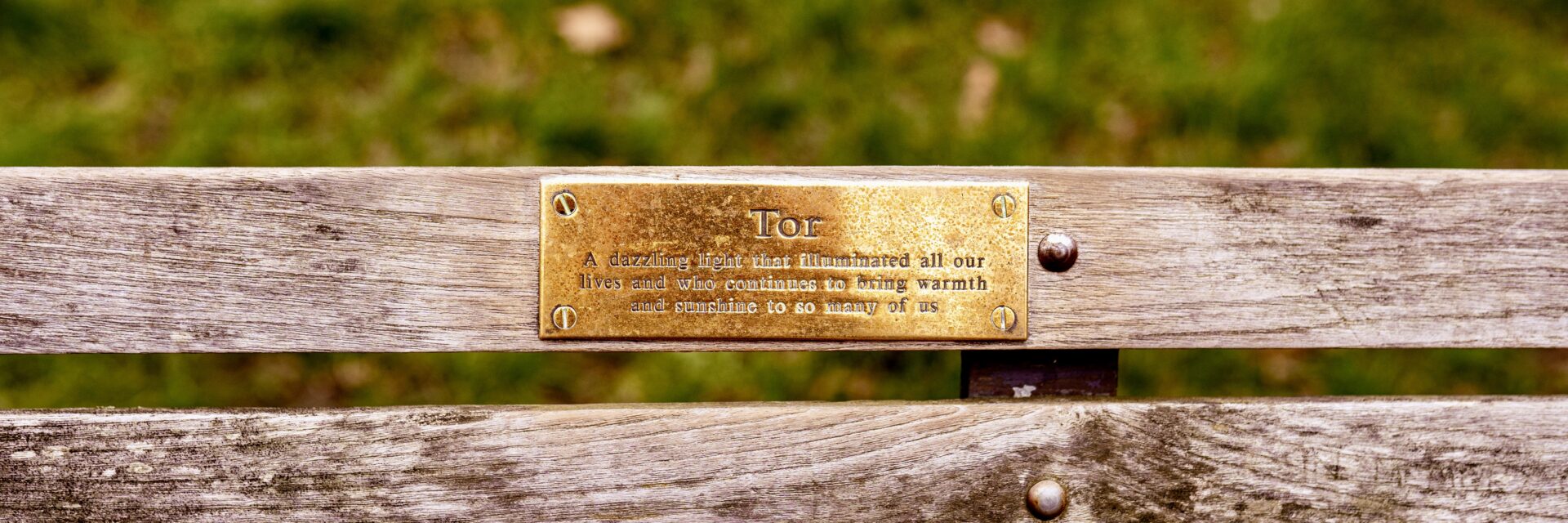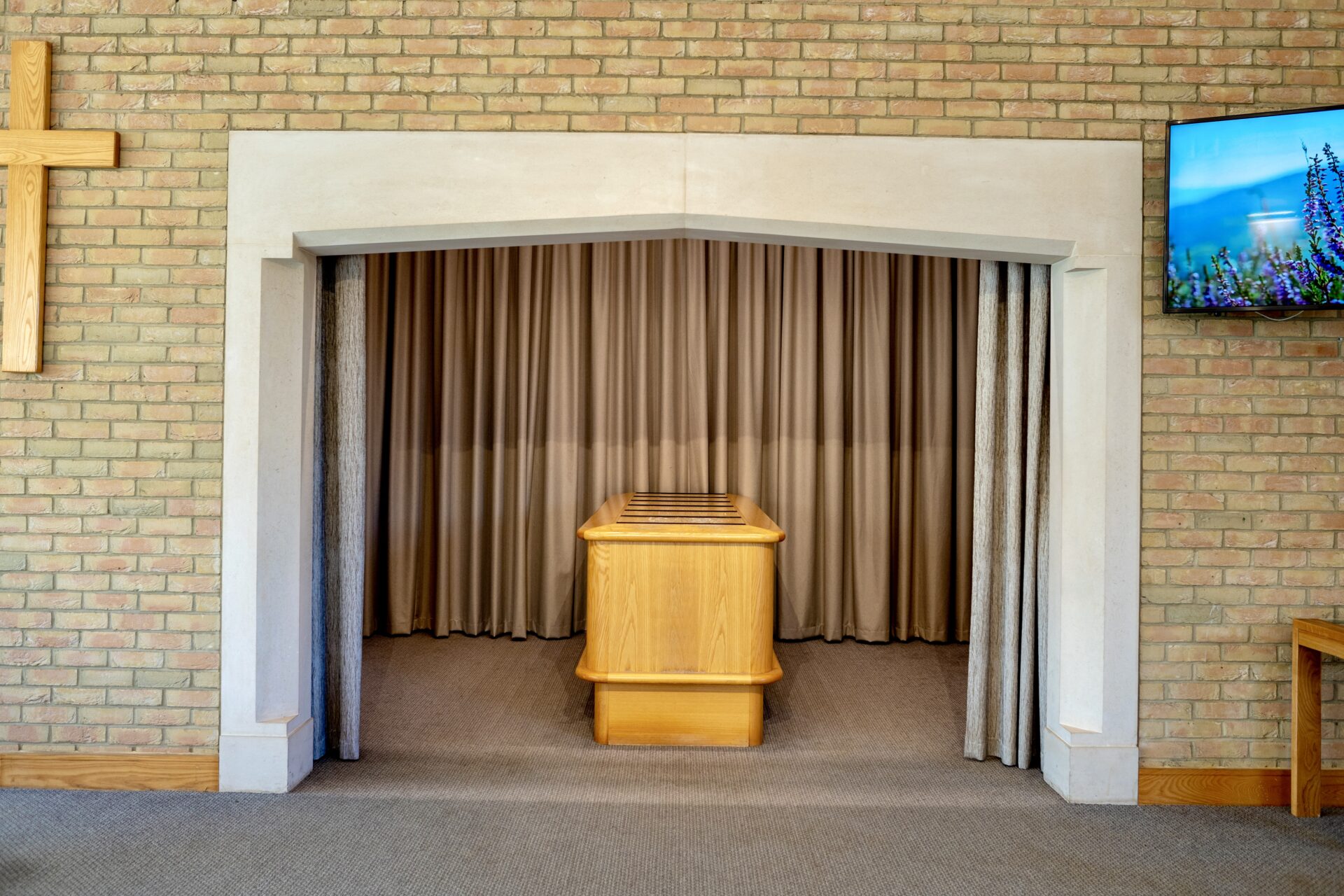
Two Together: Save £100!
Save £100 when you purchase two funeral plans together. Call us for more details.

Two Together: Save £100!
Save £100 when you purchase two funeral plans together. Call us for more details.

The cremation process is a bit of a mystery to most of us who don’t work at a crematorium. That means it’s natural to often find ourselves asking questions like “Do they burn the coffin at a cremation?”, or just generally wondering what happens with things like ash collection and processing.
In this article, we want to answer these questions and more, helping you to feel more comfortable with the cremation process.
When we want to mark the passing of someone who was dear to us with a funeral, we have a couple of different options. The two most common ways in the western world are to either bury someone in a cemetery, or to cremate them.
Cremation is a process that uses extremely high temperatures to burn human remains, reducing them to ash. The coffin, containing the body, is placed inside the cremator, which is essentially a kind of furnace, and it is then subjected to extremely high temperatures.
Once the cremation has been completed, the ashes are ground down into a finer powder using something called a cremulator. Finally, they are gathered using a rake, and scattered or dispersed to the family of the person who has died.
Contrary to popular belief, coffins are not reused after cremation. The body of the person who has died is contained within their coffin, and both are cremated together. Where possible, fittings like screws and handles are made of things like plastic, which will be consumed by the flames. But if they are made of metal, they are carefully extracted from the cremator using a rake, once it has returned to a cooler temperature.
The coffin preserves the dignity of the person who has died once they enter the care of the funeral home – indeed, by law, bodies need to be covered in public places, partly for this reason. From the moment they are placed inside, they never leave the coffin. They are then either buried or cremated together, depending on the funeral they’ve chosen.

In short, yes the coffin does get cremated. During a cremation, the temperature of the cremator will reach somewhere between 1000 and 1300C, so there is no way that a coffin (or indeed the body) can last beyond the process. This means that a coffin cannot be reused or given to someone else after a cremation has happened.
At a temperature of 1000-1300C, it takes between 1 and 3 hours to complete the cremation of a body. Once the cremation ceremony is completed (which, with an Aura attended service, could take up to 45 minutes depending on whether the funeral has been organised to allow mourners to be there), the coffin is brought from the ceremonial chapel of the crematorium to the cremator area on the same premises.
Next, crematorium attendants will check the nameplate of the coffin against their records, making sure to match them up, ensuring that no identification mistakes occur. This will help them to link the ashes to the person who has died afterwards. The coffin is then placed inside the cremator, and the cremation will occur.
After cremation, with Aura, the ashes can even be personally hand-delivered to the family inside a scatter tube, or simply scattered at the crematorium’s own Garden of Remembrance, as preferred. Whatever works best for you.
These days, there’s quite a diverse range of materials that can be used to make coffins. Just as the formal, traditional funeral isn’t for everyone, people have different preferences for their coffin. Of course, the standard oak or elm coffin with brass fittings is still the most popular. But now there’s the choice to use wicker, for something less formal, or even cardboard for those who want to make a more environmentally conscious choice.
The key when it comes to materials for coffin construction is that they need to be combustible (hence the reason that different types of wood are favoured), and they should not emit smoke, or give off toxic gas. They also shouldn’t leave any retardant smears or drips after the final cremation.
It’s natural to feel a bit worried about matters relating to coffins and cremation, as, once we’re gone, we don’t have any control over what happens next. We simply have to trust that the professionals in whose care we’ve been placed will do their best to be diligent and ethical. Below are a few more common questions that people tend to have about coffins.
Coffins are not reused after cremation: they are fully consumed by the extreme heat of the cremation process, and hence cannot be given to anyone else afterwards. There are quite a few popular myths about cremation, and the question of whether they burn the coffin during a cremation or whether it gets reused is one of the most widespread.
It’s perfectly natural to wonder whether this is the case, as we have no oversight of the process once we have died, but please do not worry about it. Coffins are never reused. Once the person who has died is placed inside, it is sealed and never reopened.
According to SunLife, it’s perfectly possible to be cremated without a coffin. The law in the UK explains that bodies must be covered in public, but it doesn’t say that this has to be done with a coffin specifically.
Some people opt to be cremated simply whilst wrapped in a shroud or some kind of cloth, but those who work with the bodies of the deceased prefer to use coffins, as it makes the body easier to move around and store.
More and more of us are looking at our coffins as an opportunity to express ourselves. Maybe the traditional, formal wood-and-brass coffin isn’t really you, and that’s okay: there are plenty of other options out there.
Wicker is an alternative material that lots of people are looking to for stylistic, environmental and economic reasons. People feel that the lighter material offers a softer impression than oak that lends itself more to their personality.
There are others who like to adorn their coffins with all kinds of decorations and colours: If you’re a sportsfan, you can get your favourite team’s colours (and possibly even their badge) emblazoned on your coffin. Others prefer to have cherished family photos or photos of their favourite place, so that they can always have comfort and be in their happy place.
There’s even the option to use more biodegradable materials, like reinforced cardboard, willow, bamboo or recycled wood for your coffin, if you’d like to make a more environmentally friendly choice.
While the coffin itself is burned during the cremation process, depending on what it’s made of, there could be some additional steps to go through afterwards.
Within 21 days of an Aura direct cremation, the ashes will be processed in one of two ways. Depending on the preferences of the person being cremated, or their family, we can either specially hand-deliver the ashes back to the family at home. The cost of this is included in the overall price for our funeral plan customers, but will come at an additional fee for those arranging a funeral without a plan. It’s a nice, meaningful touch that many people appreciate.
If you don’t feel like that would work for you, or if you’re not comfortable with receiving your loved one’s ashes at home, we would be more than happy to scatter them for you with dignity at the crematorium’s Garden of Remembrance. We’ll happily do that at no extra cost to you.
After the body and coffin have been cremated, the ash is ground into a powder using something called a cremulator (after the cremator has returned to a safe temperature), and then gathered using a rake. If the handles of the coffin were made of a material that can withstand the high temperatures, such as some metals, they will be removed from the ash. However, most of the time they are also consumed along with everything else.
The wood used to make coffins is often veneered in order to enhance its appearance with a clean shine. Many people appreciate how this looks on the day of the funeral. However, this veneer (along with the formaldehyde chipboard that also goes into a coffin) gives off pollutants into the atmosphere when it is burned.
It’s worth bearing this in mind when choosing where to scatter the ashes of a loved one. Ash, along with these pollutants, also contains higher levels of something called ‘phosphate’. When we scatter the ashes of our loved ones in places dear to them, such as in parks, or on hilltops and in forests, we can actually alter the ecology of those places in a negative way. The Cremation Society provides some useful guidance on best practice for the scattering of ashes.
There are various legal matters to consider regarding coffins, as well as ethical standards and codes of conduct.
Those providing cremation services don’t currently have any binding legal obligations regarding the use of coffins. However, diligent organisations might look to join a group like the Federation of Burial and Cremation Authorities (FBCA). They prescribe sets of rules that must be followed if individual crematoria want to be members of the organisation.
The FBCA and other organisations aim to increase and promote the ethical standards within the cremation industry. They promote Codes of Practice for burial and cremation that aim to focus on all areas of each process, from the recruitment of the right people into jobs in the industry, to identification procedures.
The Cremation Society is another British organisation that publishes journals and gathers statistics about cremation in the UK, as well as organising conferences at which cremation professionals can gather to discuss the practice.
We hope you have found this article useful, and that it has set your mind at ease about coffins and cremation. If you have any questions about the cremation process in general, or if you’d like to ask us about our funeral services, then please feel free to give us a call.



If you have any questions, would like a brochure or simply would like a chat through our services, our award-winning team is here to help.
Unlike other providers, we won’t hassle you with constant calls. We’ll simply ensure you have the information you need and leave you to come to a decision in your own time. When you’re ready for us, our team will be ready to help.